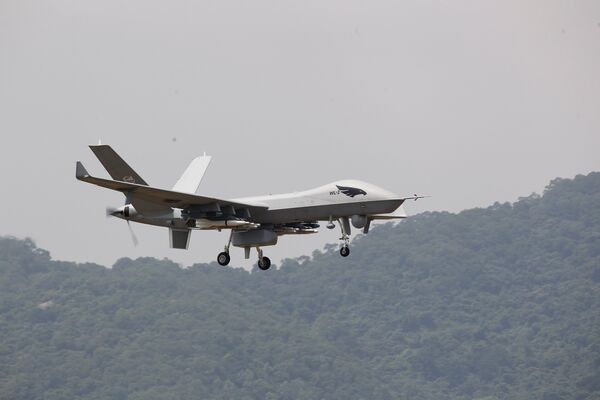Akhil Kadidal

The Chinese People's Liberation Army Air Force (PLAAF) has been developing new combat tactics and methods of operation for unmanned aerial vehicles (UAVs), including remote take-offs and landings at locations far from home base airfields and potential manned-unmanned teaming (MUM-T).
According to a report by the state-owned broadcaster, China Central Television (CCTV), on 12 August a PLAAF UAV unit in the Western Theater Command (WTC) has been conducting these trials using Aviation Industry Corporation of China (AVIC) Wing Loong II (Gongji-2 or GJ-2) multirole medium-altitude long-endurance (MALE) UAVs.
The Wing Loong IIs were used in a recent exercise in the “deserts of northwest China” to conduct “reconnaissance and strike training in a realistic combat scenario”, CCTV said.
During the exercise, the UAV operators were tasked with operating the Wing Loong IIs at long ranges using mobile ground control stations (GCSs), according to CCTV. Imagery of the three-vehicle GCS showed the employment of a satellite communications (satcom) antenna. Janes assesses that this supports long-range flights and navigation.
Exercise objectives included searching, detecting, identifying, and attacking multiple targets during a single sortie, CCTV said.
“This kind of remote control is a new combat pattern developed by the [unit] this year,” according to CCTV. A unit member told the broadcaster that “when needed, the ground station can connect with the aircraft from anywhere and complete tasks including take-off and landing as well as other missions”.
No comments:
Post a Comment